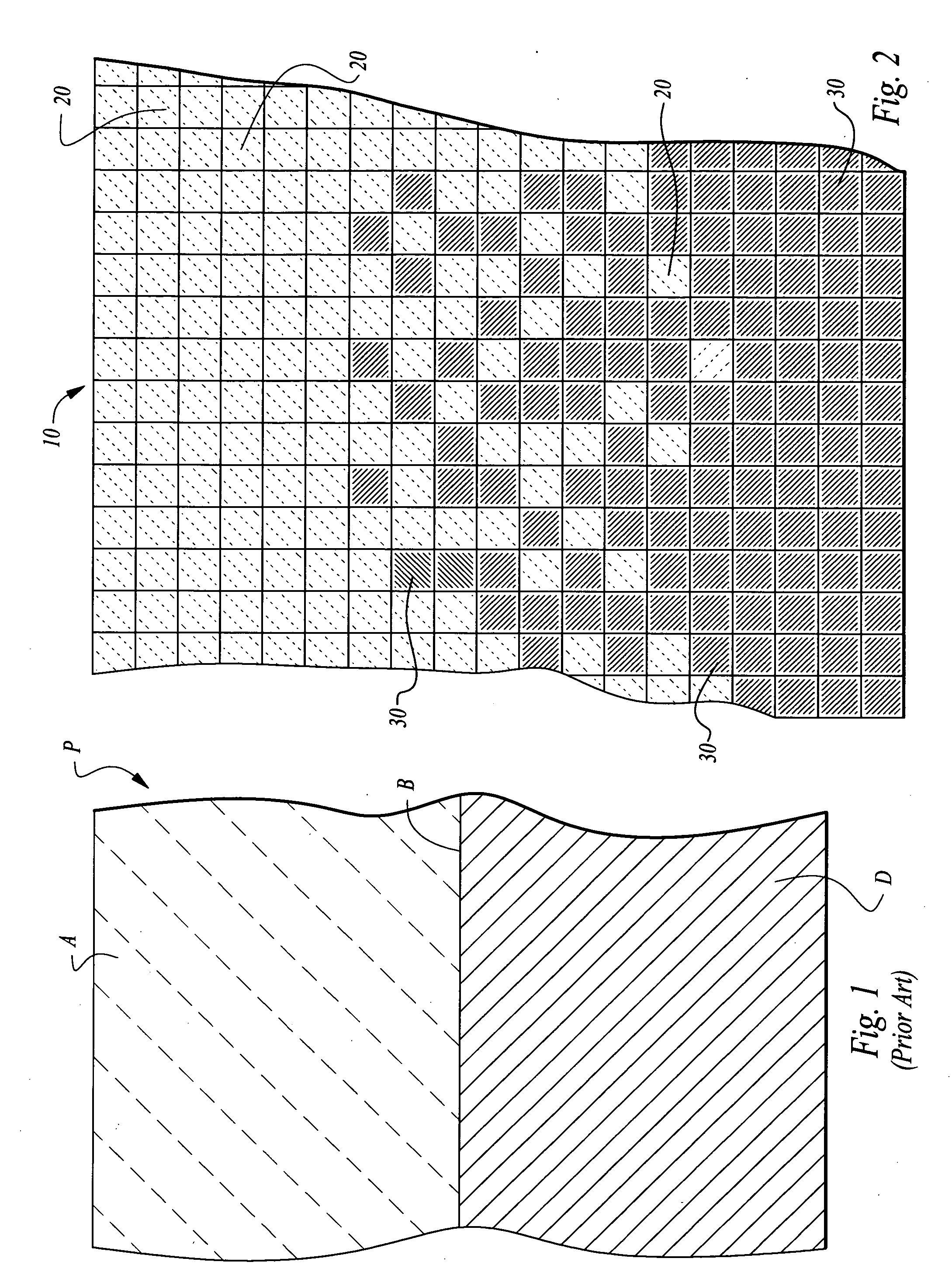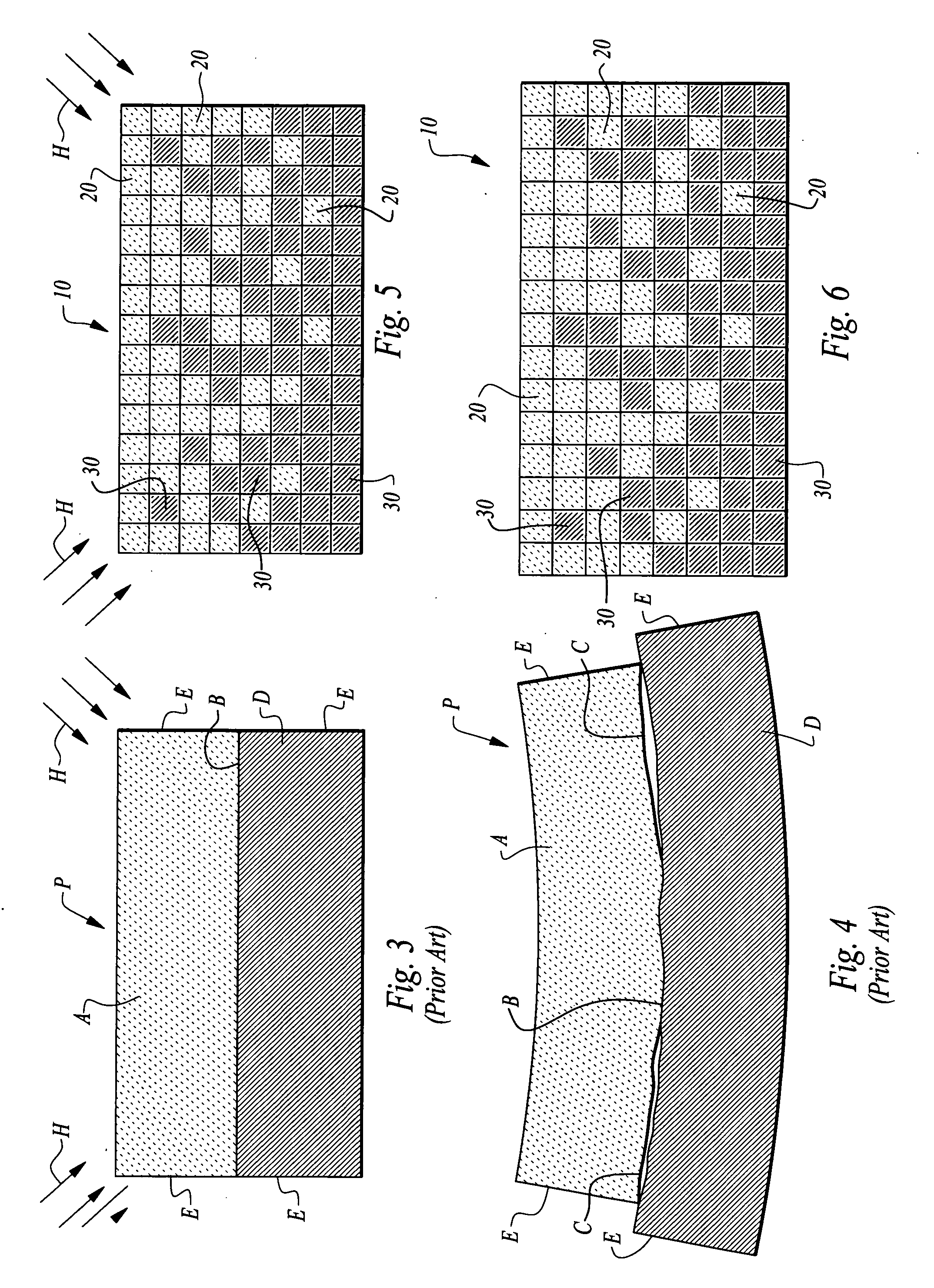Boundary configurations for multi-material print-forming
- Summary
- Abstract
- Description
- Claims
- Application Information
AI Technical Summary
Benefits of technology
Problems solved by technology
Method used
Image
Examples
Embodiment Construction
[0050]Referring to the drawings, wherein like reference numerals represent like parts throughout the various drawing figures, reference numeral 10 is directed to a structure (FIG. 2) that is formed of two different materials. The two materials come together at a boundary region with one of the materials comprising first micro-bricks 20 and one of the materials comprising second micro-bricks 30. The first micro-bricks 20 and second micro-bricks 30 are largely confined to separate regions adjacent each other at the boundary region. Within the boundary region, various different transitional schemes are employed to gradually transition from substantially only the first material to substantially only the second material. In this way, dissimilarities in the performance of the materials do not result in concentration of stresses and otherwise sharp differences in material performance at the boundary. Rather, any such stresses are dispersed so that less overall stress and propensity to fail...
PUM
| Property | Measurement | Unit |
|---|---|---|
| Time | aaaaa | aaaaa |
| Concentration | aaaaa | aaaaa |
| Structure | aaaaa | aaaaa |
Abstract
Description
Claims
Application Information
 Login to View More
Login to View More - R&D
- Intellectual Property
- Life Sciences
- Materials
- Tech Scout
- Unparalleled Data Quality
- Higher Quality Content
- 60% Fewer Hallucinations
Browse by: Latest US Patents, China's latest patents, Technical Efficacy Thesaurus, Application Domain, Technology Topic, Popular Technical Reports.
© 2025 PatSnap. All rights reserved.Legal|Privacy policy|Modern Slavery Act Transparency Statement|Sitemap|About US| Contact US: help@patsnap.com



